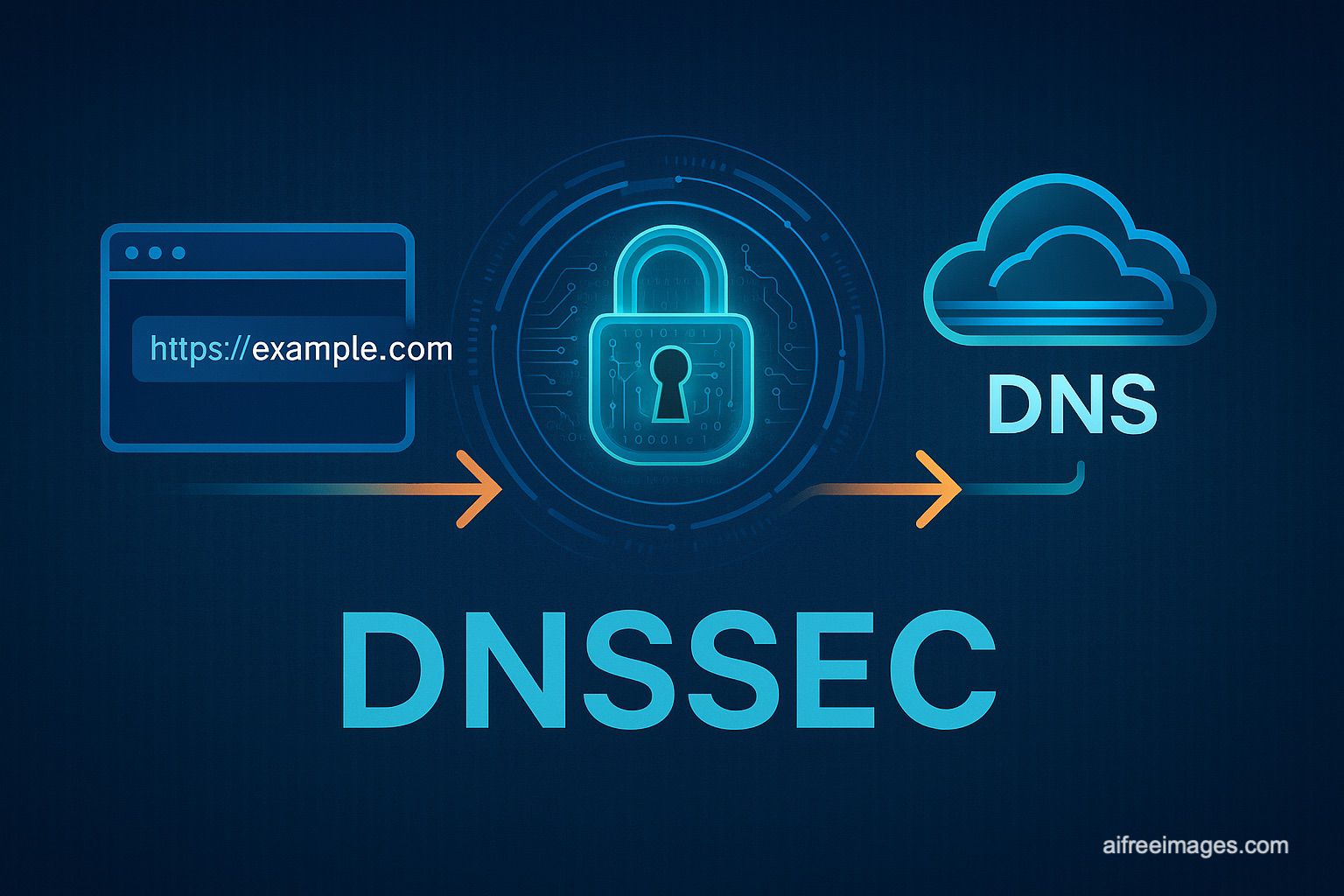The Security Extensions for the Domain Name System (DNSSEC) represent a critical evolution in internet security. This protocol adds cryptographic signatures to DNS records to protect against malicious attacks that could send users to fraudulent websites or compromise the integrity of transmitted data.
The Fundamental Problem of Original DNS
The original DNS system was designed in an era when security was not a primary concern. Its architects did not include robust security measures, leading to vulnerabilities that attackers have exploited for decades. Without DNSSEC, users are vulnerable to:
- DNS cache poisoning: Attackers can insert false records into DNS servers.
- Response spoofing: DNS queries can be intercepted and answered with malicious information.
- Man-in-the-middle attacks: Data can be modified during transmission.
How DNSSEC Works: The Security Architecture
Cryptographic Signatures and Validation
DNSSEC operates by adding cryptographic signatures to existing DNS records. These signatures are stored alongside traditional record types like A, AAAA, and MX. Validation checks ensure that the records come directly from the authoritative name server and have not been tampered with during transit.
Types of DNSSEC Records
The protocol introduces several new specialized record types:
- RRSIG (Resource Record Signature): Contains the digital cryptographic signature for a set of records. Each signed RRSet has a corresponding RRSIG, enabling authenticity verification.
- DNSKEY: Stores the public keys used to verify RRSIG signatures. These are fundamental for establishing a chain of trust.
- DS (Delegation Signer): Contains the cryptographic hash of a DNSKEY record, linking parent and child zones in the DNS hierarchy.
- NSEC/NSEC3: Provide proof of non-existence, confirming that certain domain names do not exist within the zone, preventing attacks that exploit fake NXDOMAIN responses.
The DNSSEC Key Infrastructure
Zone Signing Keys (ZSK)
ZSKs sign most records within a DNS zone: they are rotated more frequently to maintain security, sign actual data records (A, AAAA, MX, etc.), have lower computational impact, and allow more agile zone updates.
Key Signing Keys (KSK)
KSKs add an extra security layer by signing ZSKs instead of data directly. They are updated less frequently because of their computational complexity and create a stronger trust hierarchy, simplifying administrative management by separating signing responsibilities.
Trust Chain and DS Records
DNSSEC’s strength lies in its “trust chain.” DS records in parent zones contain hashes of the child zone’s KSK, establishing a verifiable cryptographic link. This chain extends up to the root zone, where trust anchors provide the starting point for all DNSSEC validation.
Operational Modes of DNSSEC
Offline Signing of Static Zones
This mode offers maximum security by keeping private keys in systems isolated from the network, ideal for zones with infrequent changes, organizations with high security requirements, and environments where immediate availability isn’t critical. It provides maximum protection but involves slower, more complex updates.
Centralized Online Signing
Balances security with operational flexibility: keys are stored in secure, connected systems, enabling faster zone updates but requiring robust security infrastructure.
Real-time Signing
Provides maximum operational flexibility: authoritative servers sign records on-demand, supporting dynamic responses and personalization. However, it introduces additional risks related to key distribution.
Implementation Challenges and Considerations
DDoS Amplification
DNSSEC can unintentionally increase the risk of DDoS attacks due to larger response sizes from cryptographic signatures, amplification factors where small queries generate large responses, and dependence on UDP, which is vulnerable to IP address spoofing.
Operational Complexity
Implementing DNSSEC introduces complexities such as managing keys—generation, rotation, revocation—ensuring synchronized signatures, and continuous monitoring for validation issues.
Root Signing Ceremony: A Global Security Ritual
One of the most fascinating DNSSEC implementations is the root signing ceremony—a highly ritualized process that protects the master key of the entire DNS infrastructure. It involves specialized roles such as ceremony administrators, cryptographic officers, security controllers, and witnesses who verify each step. The process uses multi-layered physical security measures, including separate vaults, multi-factor authentication, specialized hardware, and publicly recorded procedures.
Practical Implementation and Recommendations
Needs Assessment
Organizations should evaluate domain criticality, available resources, existing infrastructure, and risk tolerance before deploying DNSSEC.
Gradual Deployment Strategy
Recommended phases include:
- Infrastructure auditing
- Pilot implementation on a subdomain
- Exhaustive validation
- Gradual rollout on critical domains
- Continuous monitoring and optimization
Best Operational Practices
- Automate key rotation processes
- Maintain redundancy with multiple signing systems
- Document procedures thoroughly
- Train staff comprehensively on DNSSEC operations
The Future of DNSSEC
Technological Evolution
DNSSEC continues to evolve to meet new challenges:
- Post-quantum algorithms to prepare for future computational threats
- Performance optimizations to reduce operational overhead
- Integration with IoT devices with limited resources
Global Adoption
Adoption is steadily increasing:
- Many ccTLDs and gTLDs are signed
- Critical sectors like government, banking, and essential services lead adoption
- Educational initiatives raise awareness about DNSSEC importance
Conclusion: Security as a Foundation
DNSSEC is more than an incremental technical upgrade; it’s a fundamental shift in how we conceive internet security. As digital infrastructure underpins nearly all human activities, ensuring the integrity of the DNS system is crucial. Implementing DNSSEC is not only a technical necessity but a responsibility to users and the global internet community. While it introduces operational complexities, its security benefits far outweigh the challenges.
Organizations that have yet to adopt DNSSEC should consider it an integral part of their cybersecurity strategy. In today’s digital age—where a single successful DNS attack can irreparably damage reputation and security—DNSSEC is an essential investment for the future. The key questions now are not if, but when and how to deploy it effectively, as the future of internet security depends on the choices made today.

